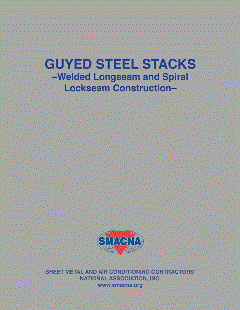Polyglass Founder Romano Zanchetta Dies at 88

Romano Zanchetta, a founder of Polyglass, leaves behind a legacy of innovation to the roofing industry. With his spirit of entrepreneurship, focus on improving roofing products and equipment, and gifted talent for developing products to solve roofing challenges, he was truly an industry pioneer. He had a fierce love of family and treated Polyglass and its employees as an extension of that family. At 88, Romano lived to see his vision passed on to a new generation.
The early years
Romano Zanchetta was born in northeast Italy in 1932, part of a large farming family from the Treviso area, near Venice. As a teenager, he and his brothers Luigi and Antonio joined a stream of young Italians chasing greater economic opportunity by migrating to an area of Switzerland near the Italian border. He took a job with a roofing contractor, eventually becoming an expert roofer. There he gained his first exposure to roofing products and systems manufactured in the United States and Europe.
Romano spent a decade in Switzerland, where he married and started a family that eventually grew to seven children. After a tragic natural disaster destroyed the area near his home village in Italy in1963, Romano and his brothers returned to Italy to use his roofing skills to help rebuild. This disaster was the collapse of the Vajont Dam which caused landslides and flooding, as well as resulted in more than 2000 deaths and destroyed five villages.
During the rebuilding era in the mid-1960s, Romano made use of an innovative new roofing product made by melding asphalt with Atactic PolyPropylene (APP). APP started its life as merely a waste product from the plastic manufacturing process. Polypropylene, first polymerized by Italian Nobel Prize winning chemist Giulio Natta and others, was the foundation of the huge new plastics industry, with products commercialized by Italian manufacturers.
Romano set out to use the new material for the massive job of rebuilding those towns lost to the floods. According to Romano’s son Natalino Zanchetta, now CEO of Polyglass, his father first heard of the marvellous properties of this so-called waste product from manufacturers in the Marghera petrochemical factories near Venice. “He got a hold of the material, experimented with it and started to meld the APP with the asphalt. He discovered the beauty of this type of injection into asphalt – and used his knowledge to form a roofing membrane with superior waterproofing properties.”
By 1967-68, Romano developed ways to use the new asphalt, searching for the best ways to laminate the product. According to family lore, Romano was struggling to find a way to make the material smooth, when his wife Elda told him to use the pasta maker to get the smoothness he needed. And the rest is history- a fitting connection to the birth of APP modified bitumen membranes!
Entrepreneurial instincts kick into high gear
Romano knew he had a winning idea and in 1968-1969 the brothers partnered with Boato International, now a global leader in fabricating plants for the production of modified bitumen membranes. Using equipment developed by Boato, Romano and his brothers founded Polyglass and installed the first production line in 1969 in the back yard behind Romano’s house in Ponte di Piave. Fast forward only a few years to 1972, when the brothers opened a true manufacturing facility in a new industrial area located in Ponte di Piave, in the province of Treviso. Focused on his pioneering vision to create new roofing products, Romano and his brother Luigi began producing products for the marketplace. At that point their other brother Antonio split off to focus solely on the roofing contracting business.
While partnering with Boato and exporting products and technology to the United States, Romano became convinced that the firm had to expand beyond Italy to the U.S. By the late 1970s into the early 1980s they had established a US Polyglass presence in Chicago, becoming active members of the National Roofing Contractors Association (NRCA). Building their first production line in Chicago in partnership with the American Roofing Corporation, Romano eventually hitched his wagon to the American dream and decided to move to the US permanently.
In 1992, Polyglass purchased a manufacturing facility in Fernley, Nevada, bringing their knowledge of building state-of-the-art manufacturing equipment to make top quality products. They expanded production, focusing on a host of APP modified bitumen membranes that took the industry by storm. By 1995, Romano and Luigi wanted to create a national footprint for the company, eventually building a second facility in Hazelton, Pennsylvania.
At the same time Polyglass continued to evolve the machinery technology in Italy. They eventually separated off from Boato to create their own in-house machinery capabilities to better control the direction of equipment innovations, upgrades, and protect the company’s intellectual property from spinoffs and competition.
The birth of self-adhesive membranes
Romano had always been on the cutting edge of roofing products, continuously seeking practical solutions to roofing problems, ways to make them safer, and perform better. His vision – and skills as a product innovator – came to the forefront again in the early 1990s. That is when he took on the serious issue of US insurance companies attempting to reduce fires by limiting roofers’ use of torching to install roofing products.
Romano’s vision was to create a product that could be applied without torching. He began experimenting with the idea in 1994 at the Italian facility. He eventually came out with the first self-adhesive membrane in 1995-6, creating a new product category within the Asphalt Roofing Manufacturers Association (ARMA).
Taking a calculated risk, he decided to dedicate the new Hazelton, PA facility to producing the patented self-adhered ADESO® modified bitumen membrane technology. The risk was worth it, and the company became recognized worldwide for the product, which is now one of the fastest-growing market segments in the industry.
Unfortunately, the excitement of the new machinery and new product was overshadowed by a personal tragedy, when Romano’s brother and trusted partner Luigi died suddenly of a heart attack. Not long after, Romano made the decision to remain in Italy to handle family matters and oversee the business operations.
More product innovation in the face of hurricane damage
The company founder’s vision expanded in the early 2000s to accommodate a huge demand for new tile underlayment products. The products turned out to be ideal for Florida roofers rebuilding after the devastating hurricanes of 2004-2005. A new facility, located in Winter Haven, Florida, was quickly built to support the need for the product. By this point, the US branch of the company was run by Romano’s children while Romano focused on the business in Italy and Europe.
In 2008, Romano decided it was time for Polyglass to make way for a new family and he put the company up for sale. True to his nature, he held out for a company that would maintain the company name and vision and make sure all the employees were treated well. After conducting a rigorous due diligence of potential suitors, he selected the MAPEI Group, a global manufacturer of adhesives, sealants and chemical products for the building industry owned by the Squinzi family. MAPEI has continued with the Polyglass brand and followed the same commitment to company culture.
“With my father’s vision and teaching, Polyglass continues to create very strong products that solve problems,” said Natalino Zanchetta. “When I last met with my father over Christmas, he told me he was especially thrilled that his family is continuing with his vision of growth in the United States. He appreciated that the company was doing great and thanked his family for taking his company to a world-class level.”
Father, entrepreneur, and roofing industry pioneer, Romano Zanchetta was a giant in the modified bitumen field. He was a family man first and always and Polyglass was an extension of that family. Always focusing on helping others, creating jobs, and supporting his family, his legacy of innovation and important contributions to the roofing industry will live on.
Looking for a reprint of this article?
From high-res PDFs to custom plaques, order your copy today!






